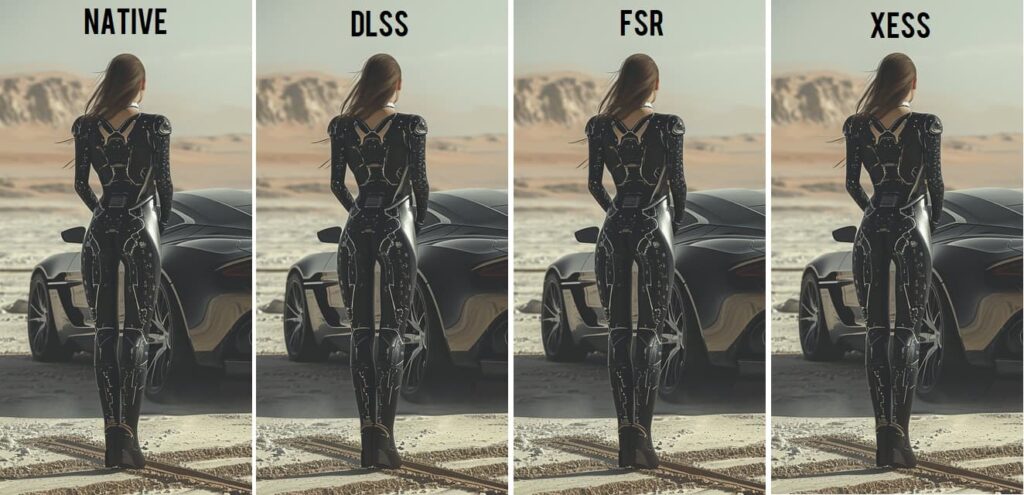Intel’s latest update to their Xe Super Sampling (XeSS) technology, version 1.3, brings significant improvements to temporal stability, promising better image quality during motion. However, alongside these enhancements comes a shift in naming conventions, introducing potential confusion for users and reviewers alike.
Key Points to Note:
- Improved Temporal Stability: XeSS 1.3 introduces notable enhancements in temporal stability, offering smoother rendering during motion. This improvement contributes to enhanced image quality and reduced artifacting.
- Shift in Naming Conventions: With XeSS 1.3, Intel has opted to redefine their naming conventions, deviating from previous standards observed in competing technologies like FSR and DLSS. This alteration may lead to confusion among users and reviewers accustomed to established naming conventions.
- Expanded Options: Despite the naming confusion, XeSS 1.3 expands the range of options available to users, introducing new presets such as Ultra Performance and Native AA. These additions provide users with greater flexibility in tailoring their gaming experience to their preferences.
- Challenges for Reviewers: For reviewers tasked with comparing the effectiveness of different upscaling technologies, the shift in naming conventions poses a challenge. Previously, selecting the same preset across technologies ensured consistency in internal rendering resolution. However, with XeSS 1.3, this consistency is no longer guaranteed, complicating direct comparisons.
- Testing and Evaluation: Initial testing of XeSS 1.3 indicates promising results, with reports suggesting improvements in motion clarity and artifact reduction. However, meticulous attention to preset selection is required to ensure accurate evaluations and comparisons.
Navigating the Naming Confusion
The revised naming conventions introduced in XeSS 1.3 necessitate a cautious approach from both users and reviewers. Understanding the implications of these changes is essential for accurate evaluation and effective utilization of the technology.
Implications for Users
For users, the revised naming conventions may initially lead to confusion when selecting presets within the XeSS interface. Previously familiar labels no longer correspond directly to specific internal rendering resolutions, requiring users to adjust their expectations and choices accordingly.
Challenges for Reviewers
Reviewers face a more significant challenge in assessing the performance and effectiveness of XeSS 1.3. The departure from established naming conventions complicates direct comparisons with competing technologies like FSR and DLSS. Ensuring consistency in testing methodologies and transparent reporting becomes paramount in navigating this complexity.
Looking Ahead: Promising Results and Continued Competition
Despite the naming confusion, initial testing of XeSS 1.3 yields promising results, with improvements in motion clarity and artifact reduction noted by testers. However, ongoing competition from established upscaling technologies like DLSS underscores the need for continued innovation and refinement.
Embracing Diversity in Options
As users and reviewers adapt to the changes introduced by XeSS 1.3, embracing the diversity of options available becomes essential. Each upscaling technology offers unique strengths and weaknesses, catering to different user preferences and system configurations.
Transparency and Education
In navigating the complexities of upscaling technologies, transparency and education are key. Clear communication from manufacturers regarding changes in naming conventions and technology performance fosters informed decision-making among users and facilitates accurate evaluations by reviewers.
Final Thoughts: Balancing Innovation and Clarity
As Intel continues to refine their XeSS technology, balancing innovation with clarity becomes paramount. While advancements in temporal stability and image quality are welcome, maintaining transparency and consistency in naming conventions ensures a seamless user experience and facilitates fair comparisons across upscaling technologies.
Intel’s XeSS 1.3 update brings exciting improvements to temporal stability, promising enhanced image quality during motion. However, a shift in naming conventions introduces potential confusion for users and reviewers alike. Navigating these changes requires a cautious approach, with a focus on transparency, education, and accurate evaluation. As the landscape of upscaling technologies evolves, embracing diversity and clarity remains essential in delivering the best possible gaming experience.




